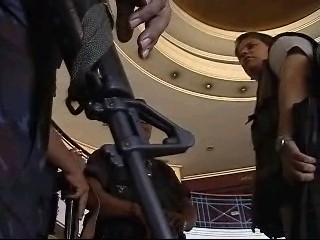H2 cars - Dingel was right
Mr. Dingel where are you?
For many years people in this country ridiculed the Dingel car- a water powered car that esentailly took a internal combustion engine and fiulled with water ran on the process of taking hydrogen from water through electrosis-change and burning the hydrogen in a normal car engine.
Problems persisted with the design and a lack of support for it - led the topic to come up only whenever the price of gasoline became - to costly... it's $3.00 a gallon at last check...
Now some history for those who still think the water car is dream.
" German inventor Rudolf Erren was among the first to study the use of hydrogen in combustion engines in the 1920s. He developed a successful method of conversion and built what is remembered as the Erren engine. It was said he put that engine into an estimated 2,000-3000 cars, busses and trucks. "
High school students in a simple High School science project ran a pickup truck - on water... which is H2O... explained.
"The easiest place to get hydrogen was by using electrolysis to split water. With the help of an alkali like potassium hydroxide, a current is passed through the water to generate bubbles of hydrogen that collects at the cathode, and the oxygen gathers at the anode. A simple generator running off the engine and/or a few solar panels like the ones used on their pickup might be enough to power the electrolysis device, or hydrogen generator."
Now buses- in Oakland, Los Angeles, and, many parts of the EU run on fuel cell powered hydrogen.
SOURCE: http://www.hydropole.ch/Hydropole/Intro/H2Transport.htm
The European Commission is allocating € 18.5 million to the CUTE (Clean Urban Transport for Europe) demonstration project in the 5th European framwork program (1998 - 2002) to support 9 European cities in introducing hydrogen into their public transport system : Amsterdam (Netherlands), Barcelona (Spain), Hamburg (Germany), London (United Kingdom), Luxembourg, Madrid (Spain), Porto (Portugal), Stockholm (Sweden) and Stuttgart (Germany).
These cities want to demonstrate that hydrogen is an efficient and environmentally friendly power source for the future of their cities. Twenty seven fuel-cell powered buses, running on locally produced and refilled hydrogen, should prove that zero emission public transport is possible today when ambitious political will and innovative technology are combined.
In 1998 a bus based on the low-floor "Citaro" with a passenger capacity of 70 equiped with a 250 kW fuel cell on the roof in the center and the main electric motor is in the back was manufactured by Daimler-Chrysler. The compressed hydrogen is stored on the roof over the front axle in eight gas tanks with a total volume of 1845 l hydrogen at 350 bar. The range of the bus is 200 km and the top speed 80 km/h. The price tag of about € 1.2 million, including two years of comprehensive technical, consulting and on-the-top maintainance.
This hydrogen/fuel cell bus project is the first project world-wide which addresses at the same time the production of hydrogen, the hydrogen refilling in city centres and the operational use in commercial public transport systems. These buses are operated like conventional buses, on the same lines and under the same tight time schedule for best comparative assessment of performance and costs. CUTE Project Fuel Cell Bus Club




0 Comments:
Post a Comment
<< Home